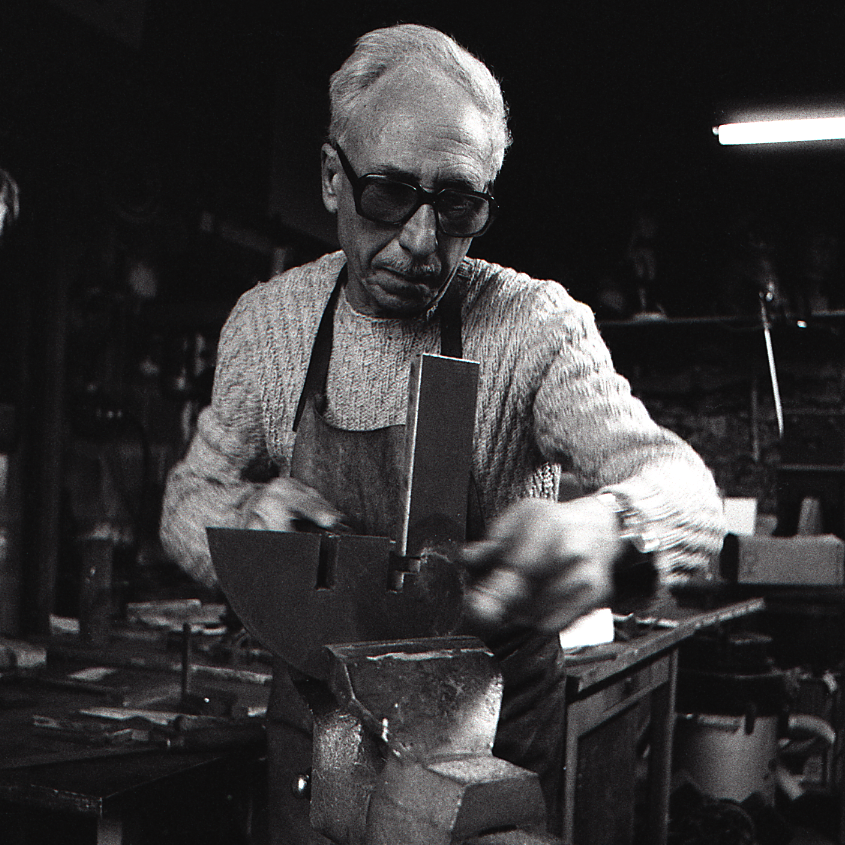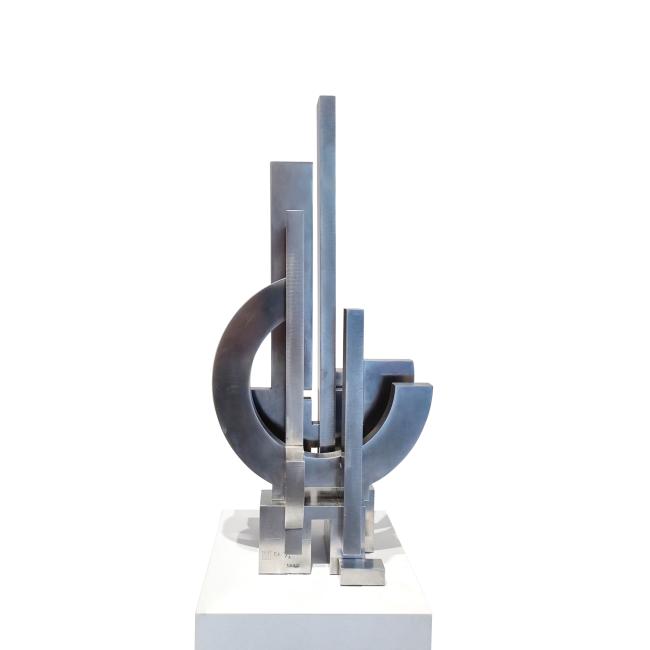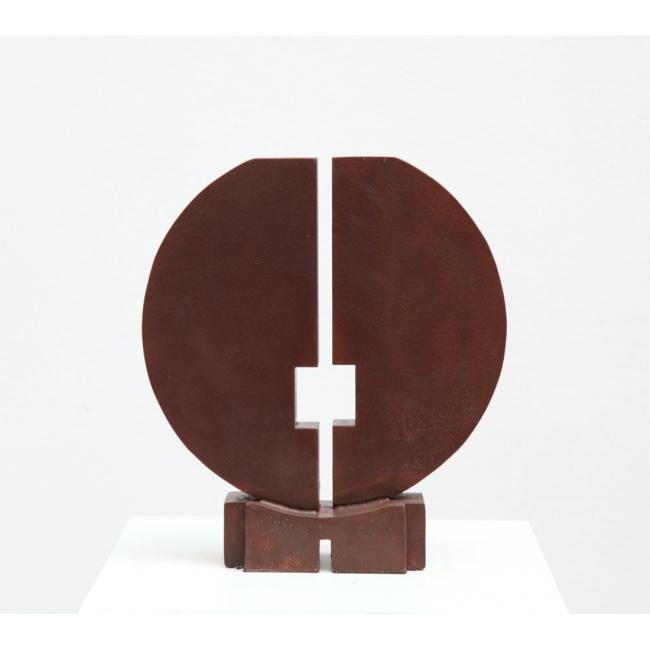Francesco Marino di Teana

Francesco Marino di Teana, born in 1920 in Teana, a small Italian town in the province of Potenza, in the Basilicata region of southern Italy. He developed a unique, innovative style based on a tri-unitary concept of 1 + 1 = 3: the empty space between two solids is not to be considered as "zero", but as an integral part of the whole, representing an energetic space of its own. The artist cuts to release "transparent energy". The second idea is that art and architecture are inseparable, part of a "significant whole" that enriches the city and its architecture.
Although the artist initially turned to architecture, it was as a sculptor that he was regularly presented by Galerie Denise René in solo exhibitions from 1960 onwards. His work, characterized by abstract geometric forms and balanced, harmonious compositions, explores the possibilities of space and light, resulting in works that seem to float in the air.
In 1962, Marino di Teana was awarded the Prix Saint-Gobain. One of the members of the jury was none other than Alberto Giacometti, with whom Marino di Teana would become great friends. Commenting on the work submitted by Marino di Teana to the 1962 competition, Giacometti said: "You can't say it's an object. It's exactly between the two fields (art and construction). What really moves me is its rhythm, its sensitivity, and therefore its plastic elements".
Since then, the artist has taken part in numerous contemporary art events in France and abroad: his works have been exhibited in museums in Ixelles, Liège, Bruges, Frankfurt, Munster, Copenhagen, Tokyo, Tel Aviv and Minneapolis.
In all, sixty-two of the artist's monumental sculptures are on display in public spaces in no fewer than five different countries.
Marino di Teana was one of the first French sculptors to use Corten steel for his sculptures, enabling him to explore new aesthetic possibilities. The sculpture entitled "Liberté" (1988-1990), installed in Fontenay-sous-Bois, will remain Europe's largest monumental sculpture in Corten steel, until Bernar Venet's "Arc Majeur" is installed in 2019 at kilometer 99 of a Walloon freeway.
As already mentioned above with his tri-unitary theory, Marino di Teana was a thinker and philosopher. He believed in the power of art to transform society and inspire individuals: "Art is nothing more than an electrophysiological shock that develops like an equation full of signs, which are worked out through reasoning, stripping down, to its final result where only one sign remains, the harmony of a whole thought: we then wonder for a moment if it is true, because there is no truth except the instant of the dream."
He also claims: "All my sculptures are architectural models". Marino di Teana designs visionary projects for the city of the future, because he wants to make architecture and urban planning an instrument for peace and harmony. He took part in the international competition for the Bastille Opera House launched in 1983.
Marino di Teana has exhibited his work in many countries around the world. His sculptures have been acquired by museums and private collectors, and continue to inspire and fascinate today's art lovers.
Despite his international fame, Marino di Teana remained humble and dedicated to his art. He kept creating sculptures until his death in 2012, leaving behind a timeless artistic legacy.

